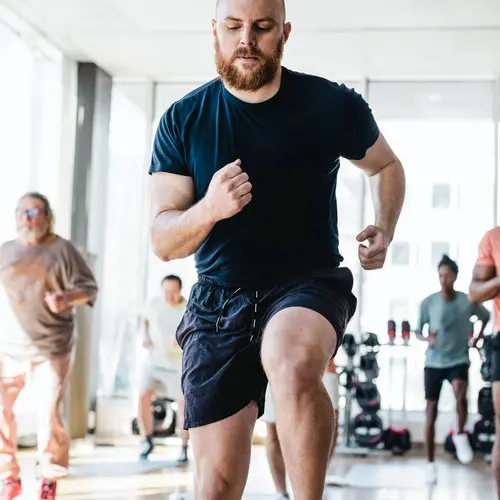There are over 600 muscles in your body. They make up over 40 percent of your weight and function in several different capacities. Several thousand small fibers make up every muscle. They aid in everything from lifting a heavy book bag to pumping blood to every part of your body. Some muscles are under your conscious control, while others are not. Muscles are made of elastic tissue that allows each type to carry out its particular job.
What Are Muscles?
Muscles are made of soft tissue and numerous stretchy fibers. Some help you perform small, delicate tasks braiding hair, and others are used for more strenuous activities like running.
Muscles also aid digestion and breathing. The heart is an amazingly strong muscle that beats thousands of times a day to pump blood throughout the body.
Function of Muscles
With the help of your nervous system, some muscles in your body can be controlled directly by you: i.e., operating voluntarily. Thinking about a movement will activate the appropriate muscles. Other muscles cannot be consciously controlled: They are involuntary. They automatically operate due to feedback from other systems of the body like the cardiovascular or digestive systems.
Collectively, your various muscles help with:
- Seeing
- Hearing
- Speaking
- Swallowing
- Breathing
- Moving, balance, and standing
- Digestion and waste elimination
- Propulsion of blood through the heart and blood vessels
- Contraction of the uterus during childbirth
Types of Muscles
In the human body, there are three types of muscle tissue:
Skeletal tissue: Skeletal muscles control the tendons, ligaments, and bones of the musculoskeletal system. They are attached to the bones via tendons that can be found everywhere in the body. Most operate voluntarily.
The diaphragm, on the other hand, is one of the most critical skeletal muscles. It is located below the lungs and is the most important muscle powering respiration. It is a large, dome-shaped muscle that contracts rhythmically and continually – most of the time, involuntarily.
Skeletal muscle fibers twitch to create short bursts of energy. Many muscle fibers contract quickly for fast movements, while others move slowly, like the muscles in your back that maintain posture.
Smooth muscle: Inside of organs like the intestines, stomach, and bladder, you will find smooth muscles. You will also find smooth muscles in various systems like the:
- Respiratory system
- Urinary system
- Male reproductive system
- Female reproductive system
These types of muscles are involuntary. They perform essential jobs like regulating the menstrual cycle, removing waste, and breathing.
Cardiac muscle: You can tell by the name that you find this muscle inside of the heart. The heart pumps blood throughout the cardiovascular system with the assistance of smooth muscles. These muscles are involuntary.
Muscles Groups
There are many terms that are used in the classification of muscle groups. Defining characteristics include muscle location, origin, and shape. Size is important and is designated by words like minimus, maximus, vastus, longus, and brevis. The action performed by a muscle can be described as abducting or adducting. A number of other characteristics are important, like if a muscle has two "heads" (like biceps), three (like triceps), or four (like quadriceps). Fiber direction (like transverse or oblique) is also important.
The back, chest, arms, legs, calves, and shoulders make up the six main muscle groups. For the body to remain strong, you should work out your body from head to toe. Resistance routines target every major muscle group, including the triceps, biceps, abdominals, glutes, chest, and more.
All of your body is interconnected, so the muscles work together and affect each other. Each plays a major part in your movements and posture.
Muscle Health
Several tests can be used to monitor your muscle health. A complete blood count, for example, is a series of tests that check for different infection types and help assess your overall health. An EMG or electromyography evaluates how your muscles and nerves work together. MRI or other imaging studies can show a diagrammed image of damage to your muscle tissues. A biopsy of the muscle will test for disease via a small sample of muscle tissue.
There are several things you can do to keep your muscles healthy and free from muscle conditions like cancer and other diseases, cardiovascular diseases, genetic disorder complications, chronic pain disorders, injuries, and infections. Get a lot of exercise by staying active and keeping all muscles, including your heart, strong.
At the same time, you should make smart choices and eat properly. A balanced diet will keep your muscles strong. Your weight will need to be maintained at a healthy level. Extra pounds can place stress on your knees and other joints. Extra weight also increases the risk of other health ailments like heart disease and high blood pressure.
Rest is just as important as exercise. Your muscles need time to heal and recover. This is particularly important after a strain. Feeling sore after strenuous activity is also a sign that you need to rest.
You also should maintain a regular evaluation schedule with your primary care provider. You should be seen at least annually. Getting regularly screened lowers your risk of developing diseases that elevate your risk for different muscle problems.

